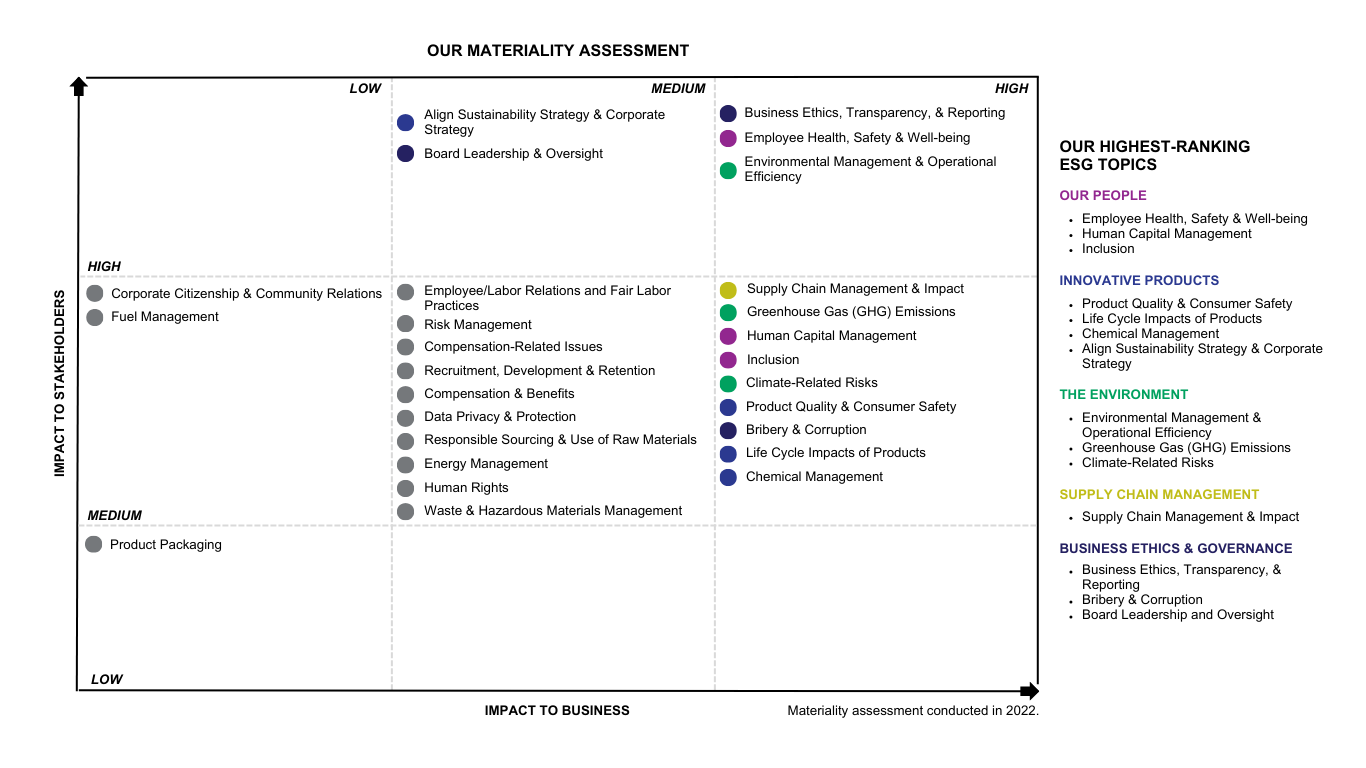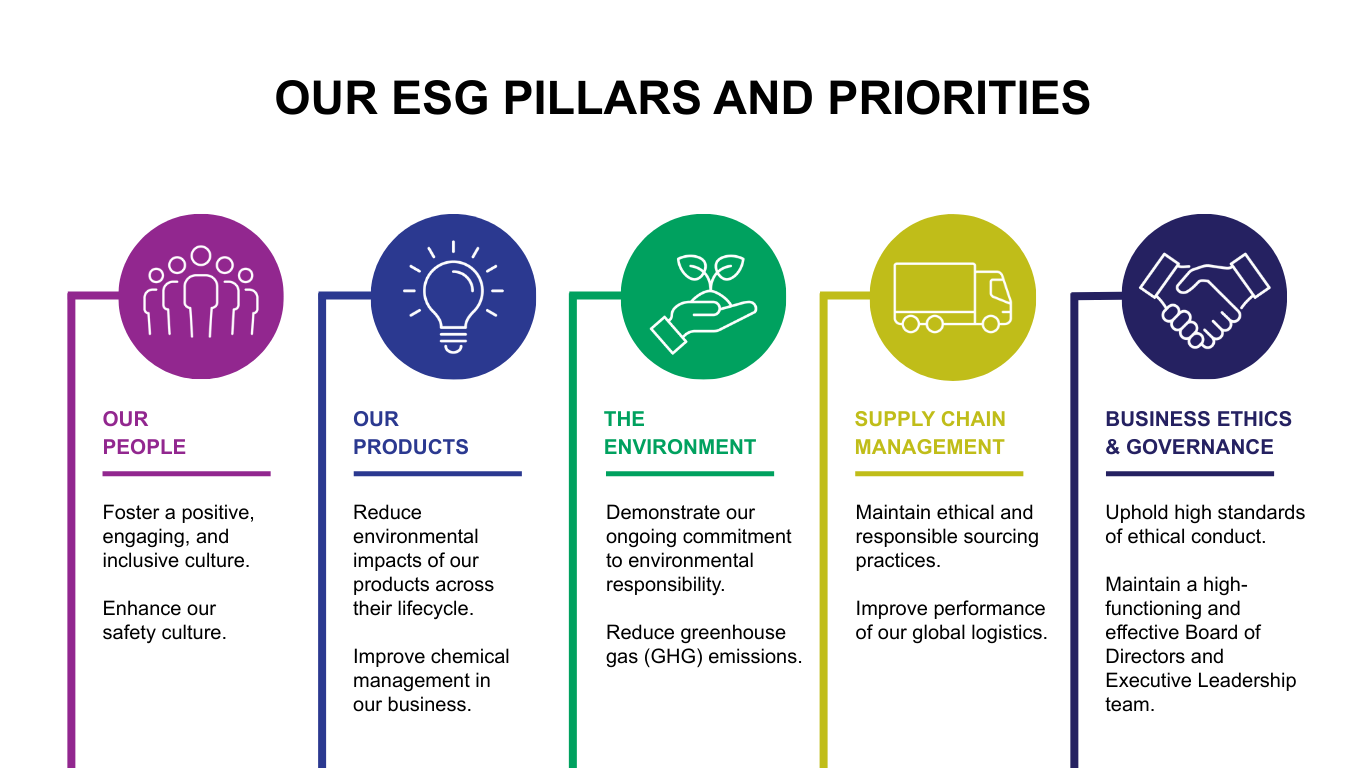Materiality Assessment
In 2022, we developed our first materiality assessment (MA) to define the environmental, social, and governance (ESG) topics that are most important to our stakeholders and business. Our MA was led by an internal cross-functional team with guidance from an external third party.
How We Determined Our ESG Priorities
Our MA process is broken into four phases:
Phase 1: Define Material ESG Topics and Stakeholders
During Phase 1, we refined a long list of ESG topics that were based on the Sustainability Accounting Standards Board (SASB) material topics, choosing the most relevant ones for our business.
We also identified key stakeholder groups based on input from internal teams, including our Executive Leadership, Investor Relations, Legal, and Human Resources teams. Internal and external parties – including customers, suppliers, investors, employees, and our business leaders – were identified as key stakeholders.
Phase 2: Assess Importance to Stakeholders
To understand which ESG topics mattered most to our stakeholders, we gave them a structured web-based survey to rank each key topic and provide input on future relevance and performance expectations. Their answers informed the Impact to Stakeholders axis of the materiality assessment grid.
Phase 3: Assess Business Impact
To determine our business impact, our Executive Leadership team, along with representatives from our Investor Relations, Legal, and Human Resources teams, ranked each ESG topic while considering four business impact dimensions: financial, reputational, regulatory, and environmental impact. The scores were averaged to determine the Impact to Business axis of the materiality assessment grid.
Phase 4: Finalize Our ESG Material Topics
We held two leadership workshops that sought input and feedback on our process and survey outcomes. As a result, we identified 14 ESG topics as the most important to stakeholders and our business (these are listed under “Our Highest-Ranking ESG Topics” next to our materiality assessment grid).
These 14 topics informed the development of our ESG priorities and goals under five pillars – Our People, Innovative Products, The Environment, Supply Chain Management, and Business Ethics & Governance.


Looking Forward
To ensure our sustainability reporting continues to focus on what matters most to our stakeholders and businesses, we anticipate refreshing our materiality assessment every three to five years.
« Return